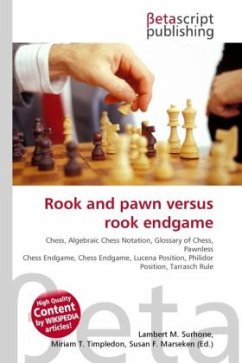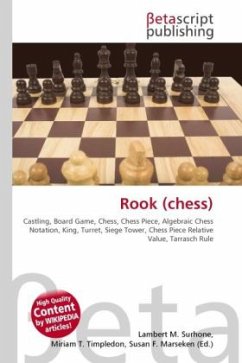High Quality Content by WIKIPEDIA articles! The chess endgame of a rook and pawn versus rook is of fundamental importance, and has been widely studied. Endings with rooks and pawns are the most common type to occur in games, occurring in about 8 to 10 percent of all games (de la Villa 2008:18), (Emms 2008:6). Rook and pawn endings with more pawns have the potential of being reduced to this type of endgame. John Nunn wrote entire 352-page book about this ending, Secrets of Rook Endings (Nunn 2007:126). Volume 2 of the Encyclopedia of Chess Endings devotes 92 pages to the analysis of 428 positions of this type (Matanovi 1985:14-105). André Chéron wrote 150 pages about this endgame in his famous book Lehr- und Handbuch der Endspiele (Nunn 1999:6). Precise play is usually required in these positions. Some complicated wins require sixty moves to either checkmate, win the defending rook, or successfully promote the pawn (Speelman, Tisdall & Wade 1993:7). In some cases, thirty-five moves are required to advance the pawn once (Thompson 1986).
Bitte wählen Sie Ihr Anliegen aus.
Rechnungen
Retourenschein anfordern
Bestellstatus
Storno








